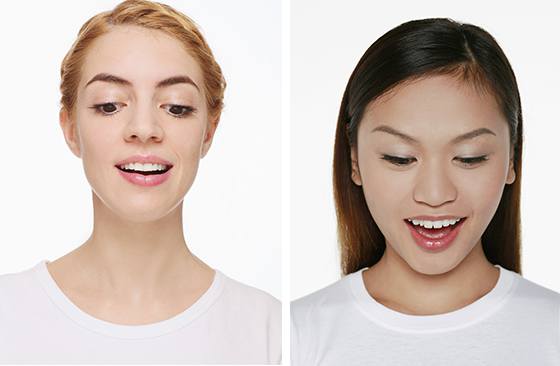More than half of teens with smartphones say texting is their main method of communication. And with more than 75% of all teens owning smartphones (according to Pew Research Center), it seems safe to say that texting is a firmly established trend. What’s more, by some estimates, adults spend an average of 11 hours each day using electronic media. As a result, people of all ages are experiencing physical effects that really didn’t exist 20 years ago, such as "text neck" (or "tech neck") and "texting thumb." These physical conditions are the direct result of overuse of electronic devices or a lack of body awareness while using them. The good news is that you can avoid the physical discomfort of text fatigue by making some simple changes to your routines.

What is Text Neck?
When you are texting for an extended period of time, the downward slant of your head atop your spine creates strain. Your head weighs about 12 pounds. The greater the degree you tip it forward to text or work on any mobile device, the more weight it puts on your spine. For example, if you bend your head at a 30-degree angle, that 12 pounds puts 40 pounds of pressure on your neck and spine. If you incline your head 45 degrees, you are putting 49 pounds of strain on your cervical spine. When you stay in this position over time, you experience pain. The strain could eventually cause deterioration in your spinal column.
According to Kenneth Hansraj, the chief of spine surgery at New York Spine Surgery + Rehabilitation Medicine, this modern day malady is reaching epidemic proportions. The Washington Post reports that smartphone users spend, on average, two to four hours hunched in a texting position each day. This amounts to well over 1,000 hours per person annually. The problems this causes are not limited to text neck, either. A sustained, bent-head posture can lessen your lung capacity, cause headaches, heart disease, and even depression.
What is Texting Thumb?
Texting thumb, which is also called Gamer’s Thumb, results from overuse to the point of fatigue. As you work your thumb over a miniature keyboard or a game console, you are giving it considerably more of a workout than it would normally get. Friction and fatigue causes inflammation, which results in pain. If left untreated, texting thumb can significantly limit those everyday tasks, such as tying your shoes, that you once took for granted.
How to Prevent Text-Related Injuries
Texting-related injuries are preventable. Although it takes a conscious effort to change the habit of looking down while texting, you can do it. Spine and posture experts suggest the following strategies:
TIP 1: Try looking downward with your eyes rather than your head. Be sure to wear a white shirt and overdramatize your facial expressions. (Okay, so that last part is not not necessary, in fact, it is not advisable at all. Not even a little bit.)

TIP 2: Hold your phone up in front of your face while texting.

TIP 3: Keep changing your head position often — every few minutes — so that one area of the neck does not get all the strain.

TIP 4: Take a break, and make it count. Breaks, especially stretch breaks are your best friend. Texting thumb prevention is mainly a matter of pacing yourself and taking frequent breaks from texting. You can also do light thumb exercises that keep the tendons supple. To help avoid text neck, take a stretch break, being sure to rotate your head both clockwise and counterclockwise to loosen the neck muscles.

Also try doing exercises at your desk such as these 6 Stretches for People Who Sit at Desks (article), or thumb exercises like these (video). On your bathroom break, you might also want to try these carpal tunnel exercises in front of a mirror. And at home or in your wellness center, you can try this floor sequence for shoulders, neck, fingers, and the carpal tunnel.

TIP 5: Try self-massage and warm water soaks. Use a foam roller along the base of the neck and skull to ease sore muscles. You can also use a golf ball! Rolling your thumb periodically with a foam roller can help, as this is a simple way to massage those small muscles and improve blood flow. You can use a small foam roller on your thumbs (top and bottom), as well as on your palms. Soaking your thumbs in warm water can also help to prevent inflammation.
TIP 6: Focus on spine health every day — Stretch the neck, lower back, hamstrings and quadriceps a minimum of 15 minutes each day to maintain a limber spine.

Take yoga classes and/or practice at home regularly. This will help you keep your spine and your whole body healthy.

TIP 7: Wear a posture alert sensor that reminds you not to put strain on your neck.

What to Do When Injury Occurs
Help is available for spinal and neck injury and pain. A chiropractor might be your first resource when you experience text neck. Physical therapy may help, and in extreme cases, surgery. For texting thumb, your doctor may recommend you stop texting until the pain is gone. Physical therapy or anti-inflammatory treatment might also provide relief. A combination of stretching, foam rolling, exercising, and common sense can help you avoid text-related injuries. Simply being aware of the risks is the first step to beating the odds.
Resources
3. http://www.nbcnews.com/news/nbcblk/essay-could-text-neck-be-new-arthritis-n494856
5. http://www.huffingtonpost.com/2015/06/18/texting-and-health-effect-on-your-body_n_7616022.html

